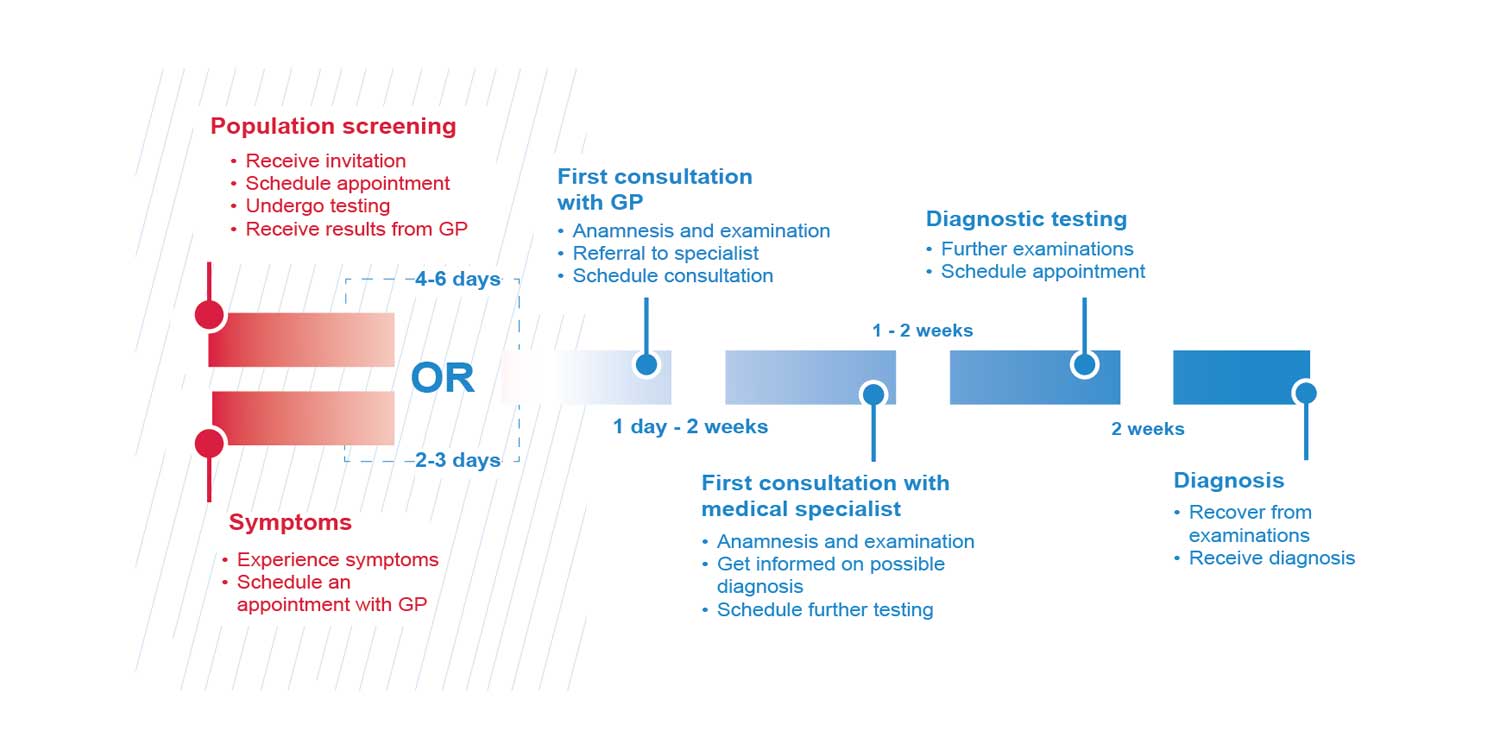The weight of waiting
Insights into the Dutch patient journey
The patient on the receiving end of the diagnosis lives in a world completely different from the clinical and precise environment of a pathology lab. To shed some light on how this person may experience their diagnostic journey, we conducted a study that investigated the insights of 14 patients from the Netherlands at different stages of obtaining their diagnoses.
Research scope, sample size and technicalities
The sample of patients consisted of 7 men and 7 women, aged between 35-67 and based in the Netherlands. All patients entered the diagnostic process and had a biopsy or blood test for cancer research no longer than 3 months before the interview.








